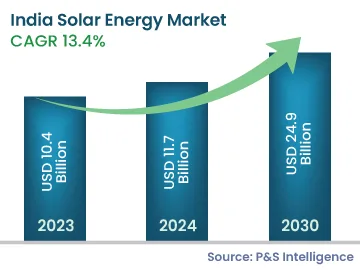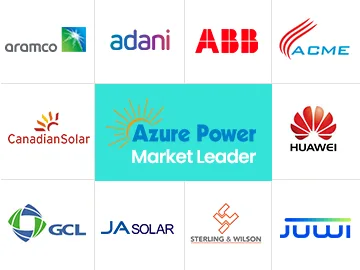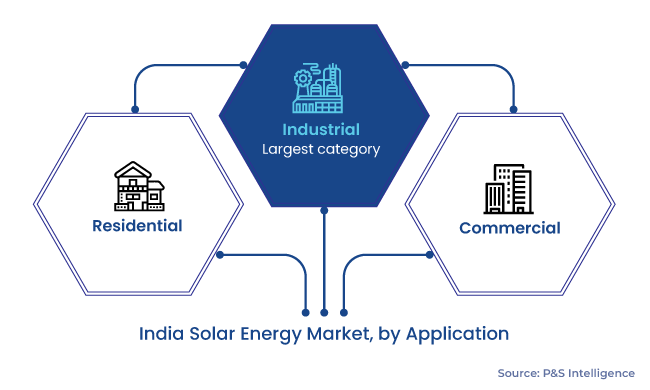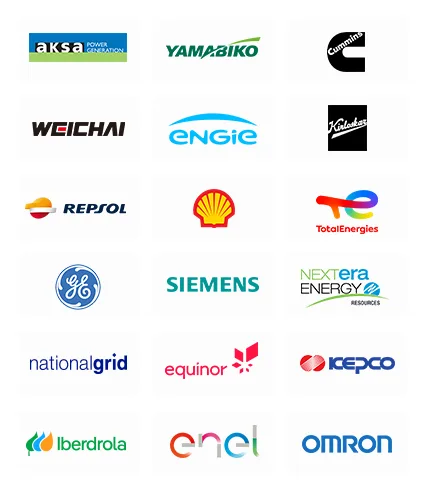India Solar Energy Market Trends and Drivers
The market is being driven by the help of the Indian government through different strategies and techniques, which mirror a significant shift toward supportable and environmentally friendly power sources.
The National Solar Mission (NSM) was launched in 2010 with the objective of reaching 100 GW of solar capacity by 2022. The NSM is a significant task wherein states are locked in to address India's energy security challenges and advance ecologically practical development. This project serves as a guide, demonstrating the government's commitment to increasing solar energy use and creating an investment-friendly environment.
The project's overarching objective is to establish India as a global leader in solar energy by establishing the regulations required for the quickest possible nationwide adoption of solar technology. This is in line with India's Nationally Determined Contributions (NDCs) goal of reducing the GDP's emission intensity by 45% from 2005 levels by 2030 and obtaining approximately 50% of the total installed capacity for electric power from non-fossil fuel-based energy assets.
Clients are given tax cuts by the government, which diminishes the establishment costs and the general expense of solar energy. Because of the fierce competition in the country, fossil fuels like coal-based power are being replaced by solar energy.
Subsidies and financial incentives are the major components of making solar energy economically feasible for both individuals and businesses. These incentives not only help to pull investors but also support a large segment of the population to embrace solar technology which contributes to decentralized energy generation.
Power distribution organizations are needed under renewable purchase obligations (RPOs) to obtain a specific amount of energy from renewable sources like solar power. This regulatory tool provides solar manufacturers with a stable market by increasing the demand for solar energy. In addition, the government’s dedication to maintaining an appropriate policy climate provides investors and developers confidence to create an atmosphere that is favorable for sustained growth.
Another aspect of the government support is the development of solar parks. These solar parks act as special areas for big-scale solar projects, which offer essential infrastructure and streamline the development process of the project. These parks help in grid integration and promote effective land use, which makes it simpler for developers to set up and run solar power facilities.
In the past few years, the country has implemented different government initiatives to increase the shares of solar energy in India’s future renewable power generation mix. According to MNRE, as of February 2023, installed solar capacity in 2022 was 66.70 GW.
Moreover, the solar policy plan was approved by the Delhi government in December 2022. As per the policy, installed capacity will increase over the next two years from 2,000 MW to 6,000 MW. In three years, this will likely increase the annual electricity demand of Delhi from 9% to 25% solar energy.
During the five-year period, from FY 2017 to FY 2022, India’s renewable energy sector has expanded at a significant growth rate of 14%. Thus, India achieved a notable milestone with a total capacity of 114 GW in September 2022.
Additionally, from overall capacity, approx. 51% constitutes solar power. From 4% in FY 2012 to 51% by September 2022, India's share of solar installations has grown at a CAGR of 29% over the past decade.




